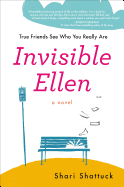
| Publisher: | Putnam | |
| Genre: | Fiction, Contemporary Women, Literary | |
| ISBN: | 9780399167614 | |
| Pub Date: | May 2014 | |
| Price: | $26.95 |
| Starred | Fiction |
by Shari Shattuck
Actress and writer Shari Shattuck's Invisible Ellen begins with an intriguing description of Ellen Homes, a 24-year-old, 273-pound, socially awkward woman who shares a low-income, one-room apartment and a "love of caloric excess" (namely in the form of bacon) with her cat, Mouse. Ellen is a product of the foster-care system, where she was either taunted or ignored due to a prominent scar on her face and a half-closed left eye. Her ego is bruised and she's shy about her physical deformities, so she develops evasive techniques to maintain anonymity and live a reclusive life. She quietly observes her struggling neighbors and coworkers--a troubled, pregnant woman and a drug dealer--from a careful distance.
But one afternoon, while Ellen is on her way to her cleaning job at Costco, a young, blind woman boards the bus and Ellen instinctively intervenes to save the stranger from being mugged. Ellen's once-manageable, invisible existence is suddenly upended. The blind woman, Temerity, takes an interest in Ellen and after more than six years of isolation, Ellen is faced with an offer of friendship--along with the motivation more fully to participate in life and courageously help others, regardless of complications.
Shattuck (The Man She Thought She Knew; Lethal) has written an upbeat, entertaining survival story about the souls of lost human beings often ignored by society. With her well-drawn characterizations and distinctive protagonists, she shows how lives can be profoundly transformed through unlikely human connections. --Kathleen Gerard, blogger at Reading Between the Lines
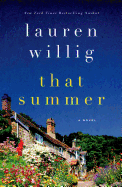
| Publisher: | St. Martin's Press | |
| Genre: | General, Fiction, Contemporary Women, Sagas, Historical | |
| ISBN: | 9781250014504 | |
| Pub Date: | June 2014 | |
| Price: | $25.99 |
| Fiction |
by Lauren Willig
It's 1849, and Imogen Grantham has been trapped in a loveless marriage for nearly 10 years. She's resigned to her dull life in Herne Hill, just outside London, until her husband commissions an up-and-coming young artist, Gavin Thorne, to paint her portrait. Gavin's presence in Imogen's life will soon change everything.
More than a century and a half later, in 2009, Julia Conley's great-aunt dies and leaves her a house in Herne Hill. Although Julia has avoided England since her mother's death, she can't turn down such an enormous gift. There, behind a fake panel at the back of a wardrobe, Julia discovers a gorgeous painting of Tristan and Isolde. She asks an antiques expert--the charming and handsome Nick--to authenticate it, and he agrees that it appears to be from the mid-19th century. Nick and Julia start researching the painting, and decide that it was possibly painted by a little-known member of the Pre-Raphaelite circle: Gavin Thorne.
Willig (The Ashford Affair; The Passion of the Purple Plumeria) returns to stand-alone historical fiction, slipping nimbly from the 19th century to the almost-present day and back again as the stories of Imogen and Julia unfold. Although Imogen and Julia live very differently (both because of their circumstances and their eras), they share a desperation to change their lives and a connection to the same house in Herne Hill. Woven throughout are fascinating tidbits about Victorian life and the Pre-Raphaelite movement.
Fans of historical fiction combined with a bit of romance and mystery will appreciate the time-jumping That Summer. --Jessica Howard, blogger at Quirky Bookworm
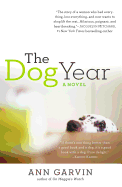
| Publisher: | Berkley | |
| Genre: | Fiction, Contemporary Women, Literary | |
| ISBN: | 9780425269251 | |
| Pub Date: | June 2014 | |
| Price: | $15 |
| Fiction |
by Ann Garvin
Beneath the surface, well-respected Wisconsin surgeon Luscious "Lucy" Peterman is a woman with a shattered psyche. Eight months ago, she lost her loving husband and her unborn child in a single afternoon. Ever since, she's tried to bury herself in work, but there's a problem: Lucy has developed an inexplicable urge to pilfer hospital supplies (such as bandages, tape and IV tubing) and stockpile them in the bedroom she once shared with her husband.
When the powers-that-be at the hospital catch Lucy in the act of stealing, she is given an ultimatum: she must enroll in psychological counseling or forfeit her medical license. Under protest, she chooses the former and soon comes to understand that her addiction is rooted in a kind of wishful preparedness. If she had such provisions with her on the day her life forever changed, Lucy might've been able to alter her fate.
The bond Lucy shares with her brother deepens as she undergoes treatment for her kleptomania and connects with an unusual cast of characters: a concerned psychoanalyst; an anorexic stranger with deep-seated emotional issues who might have friend potential; quirky 12-steppers at a local AA meeting; and a snarky cop who once knew Lucy in high school. Along the way, a stray dog unexpectedly wins Lucy's affections and helps soothe her grief.
Engrossing characterizations and unexpected complications permeate The Dog Year by Ann Garvin (On Maggie's Watch), a novel that addresses serious issues of loss and self-actualization in a very entertaining way. --Kathleen Gerard, blogger at Reading Between the Lines
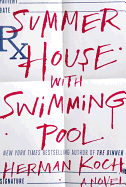
| Publisher: | Hogarth | |
| Genre: | Psychological, Fiction, Medical, Family Life | |
| ISBN: | 9780804138819 | |
| Pub Date: | June 2014 | |
| Price: | $24 |
| Fiction |
by Herman Koch, trans. by Sam Garrett
Dutch writer and actor Herman Koch (The Dinner) again fills a novel with dissension and condescension, as an upper-middle-class Dutch family deals with personal tragedy and vengeance after a summer vacation goes amok.
Narrator Marc Schlosser is a successful general physician with a solid core of patients, many of them neurotic, high-strung eccentrics from the arts. In a highly regulated national medical system, Marc provides his often hypochondriac patients with 20 minutes of nonjudgmental listening and easy access to prescription comfort, including a suicide cocktail when the time comes.
When he, his wife, and their two early-teen daughters are invited to the Mediterranean summer rental house of a patient, the well-known actor Ralph Meier, Marc finds himself in a world of hedonism and excess that scars his older daughter and nearly topples his marriage. Fat, vulgar, womanizing Ralph spends the vacation days barbecuing, drinking, ogling Marc's daughters and wife and leading nude swimming expeditions. In the freewheeling chaos of liquor and sunshine, Marc drunkenly and persistently pursues Ralph's wife, while his hormonal young daughters bask in the attention of Ralph's teen sons and Ralph himself. Marc's wife sees the dangers circling her family and begs him to leave before bacchanalian temptations lead to tragedy--too late, it turns out.
With an almost Nicholson Baker-ish flair for the details of our modern Western world of sex obsession and fragile families, Koch builds his story from the cynical musings of a successful doctor into an addictive mystery about just what happened at that idyllic vacation villa. --Bruce Jacobs, founding partner, Watermark Books & Cafe, Wichita, Kan.
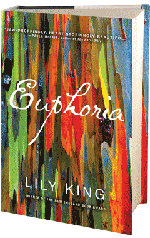
| Publisher: | Atlantic Monthly Press | |
| Genre: | General, Fiction, Historical, Literary | |
| ISBN: | 9780802122551 | |
| Pub Date: | June 2014 | |
| Price: | $25 |
| Fiction |
by Lily King
Lily King (Father of the Rain) renders three young anthropologists in 1930s' New Guinea with nuance, tenderness and charming ambiguity in Euphoria. King draws on the life of Margaret Mead and her relationships with her second and third husbands (Reo Fortune and Gregory Bateson, respectively), but the novel is only loosely based on their lives and work.
Nell Stone is an American, and has recently written a book that is receiving much attention for its controversial subject matter: the sex lives of children in the Solomon Islands. She is an up-and-coming young anthropologist being talked about around the world; when we meet her, she is just emerging from a year and a half in the field in New Guinea, alongside her husband, Fen. Fen is Australian, overbearing and decidedly threatened by Nell's success, as fame and glory as an anthropologist have so far eluded him.
When Nell and Fen come out of the field, at a party they meet fellow anthropologist Andrew Bankson. He is fresh off a failed suicide attempt, haunted by the deaths of his two brothers and unable to find himself in either his native England or the tribal communities he studies. Bankson is lonely and attracted to the couple, and suggests that he establish them with unstudied "natives" nearby his own fieldwork; he wants to keep them as his friends and neighbors.
The three form an unlikely triangle of mixed alliances. Nell and Fen, for all their disharmony, share a history and an intimacy the loner Bankson can't pierce. But Nell and Bankson achieve a singular connection of the minds: they inspire each other, each stimulating the other's best work. With Fen's sensitivity over and resentment of Nell's talents, this is a dangerous but intoxicating symbiosis, a cerebral union that is sensual and nearly sexual. Bankson is, in fact, rather in love with both Nell and Fen. The two men establish their own bonds as well, when Fen nurses Bankson through a malarial fever. It is a love triangle, but also an intellectual one, and shadows the perceptions of each anthropologist about the tribes they live amongst. They already have very different approaches: Nell has loved, ever since she was a small child, exploring other worlds so that she can come back and tell her family, friends and now colleagues about her adventures; for her, the joy is in the description and the homecoming, but she also has a knack for integrating herself into a new culture. Fen, it seems, would rather become a tribesman than study or write about the tribes. Bankson struggles to participate, but is more inclined to observation--his background is in the natural sciences. As he writes, "I was raised on Science as other people are raised on God, or gods, or the crocodile."
Lily King makes an interesting decision in choosing Bankson as her narrator, as he is the most isolated of the three, spending much of his energy in observing not only the tribal peoples he is meant to study, but also Nell and Fen. That the story of these three characters is told from the perspective of his outsider status means that the reader, too, is forever peeking in and around corners, hoping for more information. Nell's voice is heard through journal entries eventually sent to Bankson by another old friend and possible love interest of Nell's, but she remains tantalizingly difficult to access. The tension of this desire to know Nell better is central to Euphoria, for Bankson and for the reader.
King raises broader questions as well, as each anthropologist's individual approach to his or her work is troubling in its own way. The tribal communities of the fictional Kiona, Mumbanyo, and Tam peoples invite consideration about the fields and methods of anthropology and ethnology. The Tam women, who do the trading and the artistry in their community, inspire Nell's growing ideas about traditional gender roles, a stance that (predictably) does not sit well with the irritable Fen. Margaret Mead is known not only for her writings and work in anthropology, but also as a feminist thinker; in King's hands, the Tam culture inspires the beginning of Nell's own feminist development. As Bankson gravitates toward Nell's empathetic and involved relationship with the Tam, Fen is planning a serious cultural crime, which will precipitate the final denouement. (The life stories of Nell, Fen and Bankson are quite different from their historical counterparts Mead, Fortune and Bateson, so there are no spoilers for readers familiar with that history.)
Euphoria is a masterpiece of dreamy, lyrical, sensuous writing and evocation of a sometimes frighteningly exotic New Guinea. Readers can expect to be enchanted by the setting, inspired by the free-spirited Nell, challenged by the question of respectful participant observation, angered by certain of the characters' actions and teased by the sexual tension. As a bonus, the beautiful cover of Euphoria features the striking rainbow gum tree that figures in the plot of this remarkable novel. --Julia Jenkins
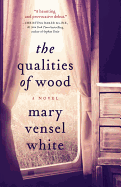
| Publisher: | Authonomy | |
| Genre: | General, Fiction, Mystery & Detective, Literary | |
| ISBN: | 9780007523580 | |
| Pub Date: | June 2014 | |
| Price: | $14.99 |
| Mystery & Thriller |
by Mary Vensel White
At the conclusion of The Qualities of Wood, Mary Vensel White's first novel, the reader might be tempted to recall a similar literary mystery, Gillian Flynn's Gone Girl. It, too, explores a relationship and a woman's disappearance. It, too, is an ominous and psychological novel that manages both artful prose and an eerie plot.
In the case of The Qualities of Wood, the novel's most interesting facets are those it doesn't share with its closest literary neighbors. Here, there are only a few hair-raising moments; instead, White explores the less terrifying but more intricate terrain of human interaction. Her focus remains on Vivian, a recent transplant to the tiny Midwestern town where she and her husband inherited his grandmother's old house. White's prose is, above anything else, atmospheric. Well-placed details like the faded yellow of the kitchen cabinets or the boxes of miscellany in the attic make the old house a place that both Vivian and the reader inhabit for the duration of the book, and the tall prairie grasses that border the woods beyond are as tangible as they are foreboding.
The cast of characters is also richly imagined: there's Vivian's brooding mystery-writer husband, Nowell, and his brawny, underachieving younger brother, Lonnie, who descends on the house midway through their stay with his new wife, Dot. Through their beer cans, barbecues, banter and the information they withhold, the reader learns to navigate these tangled histories and follows Vivian as she pulls at the threads of her husband's secrets, unraveling them one by one. --Linnie Greene, freelance writer and bookseller at Flyleaf Books
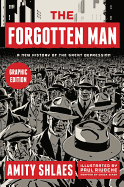
| Publisher: | Harper Perennial | |
| Genre: | United States, History, 20th Century, Comics & Graphic Novels, Nonfiction | |
| ISBN: | 9780061967641 | |
| Pub Date: | May 2014 | |
| Price: | $19.99 |
| Graphic Books |
by Amity Shlaes, adapted by Chuck Dixon and illustrated by Paul Rivoche
Confronted with the Great Depression and World War II, Franklin Delano Roosevelt established many of the social programs that led to the nation's economic recovery. But his actions have been scrutinized by critics, including Forbes columnist and Coolidge scholar Amity Shlaes, whose 2007 bestseller asserts that these economic decisions actually prolonged the Depression. Here, her controversial work is repackaged as a graphic novel.
Narrated by self-proclaimed "classic liberal" and future Republican presidential nominee Wendell Willkie, The Forgotten Man Graphic Edition pits Roosevelt's cadre of left-leaning academics (Rex Tugwell, Henry Morgenthau, Jr. and David Lilienthal) against the right wing (led by Andrew Mellon and Herbert Hoover) in a classic conservative-versus-liberal battle over the ideals that shaped much of Roosevelt's administration: the redistribution of wealth, social security, public welfare and governmental oversight of major industries. Shlaes uses the moderate Willkie to deconstruct Roosevelt's social policies, which she believes did not help the "forgotten man, the man at the bottom of the economic pyramid," but neglected and harmed the "forgotten man who's waiting for the recovery" and who wonders "is it enough for the free and able-bodied American to be given a few scraps of cash or credit?"
Chuck Dixon transforms Shlaes's points into easily digestible tidbits, yet it's Paul Rivoche's simplified black-and-white illustrations and bleak, faceless depiction of FDR as a man of shadow that deliver the biggest impact. While Shlaes's conservative ideology may offend some readers, don't be too quick to discount the question buried within the factual spin: Can current social policies continue without a more meaningful and balanced discussion about their consequences? --Nancy Powell, freelance writer and technical consultant
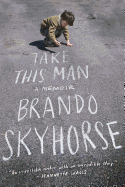
| Publisher: | Simon & Schuster | |
| Genre: | Biography & Autobiography, Alternative Family, Family & Relationships, Literary, Personal Memoirs | |
| ISBN: | 9781439170878 | |
| Pub Date: | June 2014 | |
| Price: | $26 |
| Starred | Biography & Memoir |
by Brando Skyhorse
Brando Skyhorse made his literary debut with The Madonnas of Echo Park, a novel in stories. Here he returns to the real Echo Park of his boyhood in a stunning memoir of emotional dysfunction and hard-won understanding.
When Skyhorse was three, his father left the family, driven out by his mother's manipulative narcissism. Maria convinced the boy that her new lover, a convict named Paul Skyhorse Johnson, was actually his father. The relationship ended soon enough, replaced by the next and then the next. By the time Skyhorse reached his teens, there were six of them, many of whom Maria married without divorcing the previous one, and all of whom Skyhorse was expected to call "Dad." At age 16 he learned he wasn't Indian but Mexican, with an invented name and a real father he'd never heard of.
Maria's emotional inconsistency and the loss of one father after another left Skyhorse with chronic depression. A gifted child, he was accepted into Stanford University but barely graduated after struggling socially. He moved to New York but could not sustain a relationship with his girlfriend. He still struggles with fear about his own potential to be a loving parent and partner. Skyhorse does not shy away from the head-spinning dysfunction of his childhood, nor does he gloss over his emotional pain. But this memoir succeeds as art because the real story is in his effort to find a father, to understand and to forgive. And it is a story beautifully told--often funny, always moving and with his writerly gifts on full display. --Jeanette Zwart, freelance writer and reviewer
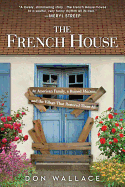
| Publisher: | Sourcebooks | |
| Genre: | Biography & Autobiography, Personal Memoirs | |
| ISBN: | 9781402293313 | |
| Pub Date: | June 2014 | |
| Price: | $14.99 |
| Biography & Memoir |
by Don Wallace
Buying a small house on the French island of Belle Île, off the coast of Brittany, was a dream come true for Don Wallace (Dear Mr. President) and his wife, Mindy. But their cottage was more of a hovel, destined to fall in the winter they bought it if they didn't fix the slate roof. Still, the "dank, peeling plaster and dangling, ripped-out electrical wires," and the kitchen walls, "stained and covered in yellow filth--old cooking grease, one hundred and fifty years of it," was perfect in the Wallaces' hearts.
Despite the misgivings of their family, the two New York City writers poured their souls into the building, and every bit of extra money they could scrape together went toward hiring skilled artisans who restored the original woodwork and plaster walls. As often as time, jobs and money allowed, the Wallaces returned to Belle Île to partake of the fresh seafood purchased right off the docks and the vegetables grown in their neighbor's garden and enjoy the wild surf on the western coastline. Reading, writing and raising their son filled their vacation days--their roles on the island minimal, and they acted more like month-long caretakers than anything else--offering respite from their dark, dreary hectic lives in New York.
Abundant reflection on the nature of quiet village life is nicely juxtaposed by commentary on the eccentric neighbors and other inhabitants of the island. Although change inevitably comes to the island, for the Wallaces, their little cottage will always be home. --Lee E. Cart, freelance writer and book reviewer

| Publisher: | John F. Blair, Publisher | |
| Genre: | Biography & Autobiography, Personal Memoirs | |
| ISBN: | 9780895876249 | |
| Pub Date: | June 2014 | |
| Price: | $24.95 |
| Biography & Memoir |
by Jeremy B. Jones
"As I dig up stories of my kin and trace their lines and land and peculiarities," writes essayist Jeremy B. Jones, "I try to pin down the qualities and actions that make me a result of this place." This place to which he's returned is near the base of Bearwallow Mountain in North Carolina, the land of his forefathers--an eclectic mix of mountain men who fought on both sides of the Civil War and the strong women who held down the homesteads.
Jones delves into the history of the land and the relationships among the Irish, Scottish and Cherokee people who called it home. In particular, he focuses his attention on Bearwallow, a mountain peak he often viewed as a boy. He recalls it as "smothered in snow," patrolled by "a giant black bear, silent but strong" that circled the peak. Intertwining reminiscences of his childhood, stories from his grandparents of times gone by, his memories of working as an English teacher in Honduras and his new position as an ESL teacher in his old elementary school, Jones tries to find himself in the ever-changing landscape.
His narrative is haunting and evocative, full of rich details of the natural scenery and the history of a population that can trace its heritage back hundreds of years. As he examines the controversy over land developers who want to build an exclusive "community" on the peak of the mountain, Jones reflects on how that action will change the entire region and realizes just how deep his roots run into the subsoil. --Lee E. Cart, freelance writer and book reviewer

| Publisher: | Houghton Mifflin Harcourt | |
| Genre: | United States, History, World War II, 20th Century, Military | |
| ISBN: | 9780547719283 | |
| Pub Date: | June 2014 | |
| Price: | $27 |
| History |
by A.J. Baime
A.J. Baime's sleek, streamlined The Arsenal of Democracy begins with Henry Ford's early years, tracing his meteoric ascension from curious tinkerer to industrial titan. Henry's son, Edsel, rode Henry's first Ford Quadricycle, witnessed the construction of his father's first factories, and was groomed for leadership. Edsel took symbolic control of the company as Henry became increasingly bitter and unstable with age. As their relationship soured, Ford Motor Company descended into squabbling factions--Henry's violent, anti-union security service and Edsel's core of progressive professionals--begetting a leadership crisis on the eve of the company's most important mission.
In the run-up to America's involvement in World War II, President Roosevelt asked the country's industrialists to vastly increase armaments production. The elderly Henry (an anti-Semite, accused Nazi sympathizer, pacifist and personal enemy of FDR) hindered Edsel's attempts build airplane engines for Roosevelt's Lend-Lease program with Britain, which created international embarrassment for the company. But the bombing of Pearl Harbor finally forced Detroit into overdrive. The elder Ford agreed to build the world's largest factory, a small city-sized behemoth called Willow Run, which would apply the assembly-line method honed on the production of the Model T to create B-24 Liberator heavy bombers. Their goal was to churn out a bomber an hour, though labor problems, company politics and Edsel's declining health came close to undermining the project. Baime (Go Like Hell; Big Shots) has given us a wartime history as enthralling as it is accessible, showing that Ford's key wartime role was far from a foregone conclusion. --Tobias Mutter, freelance reviewer
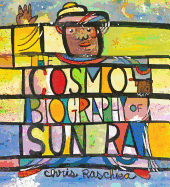
| Publisher: | Candlewick | |
| Genre: | Juvenile Nonfiction, Jazz, Biography & Autobiography, Music | |
| ISBN: | 9780763658069 | |
| Pub Date: | May 2014 | |
| Price: | $15.99 |
| Starred | Children's & Young Adult |
by Chris Raschka, illust. by Chris Raschka
Chris Raschka (Yo! Yes?) adds another star quality jazz tribute to his roster with this picture book biography of Sun Ra (1914–1993), who claimed he "came from Saturn."
The biography most closely aligns with Raschka's Mysterious Thelonious, having started as a visual representation of Sun Ra's song "Dreaming," according to the author. (His picture book biography of Thelonious Monk as a visual rendering inspired by "Mysterioso" doubles as a musical score.) Monk, one of "the wise ones, like Dizzy Gillespie," gave his blessing to Sun Ra's music in the early 1960s ("Keep it up, Sonny... it swings!"). The author-artist twines together the otherworldly nature of Sun Ra's music ("It was the thing about the earth that was most like the stars") and also the gravity of the time in which he lived ("One thing puzzled Sun Ra. The earthlings insisted on sorting themselves into two varieties: the white variety and the black variety"). Horizontal lines show up in nearly every illustration, evoking a musical staff. One of the most striking pairings features an image of Sun Ra writing musical notation while, opposite, he reads in a library where the books resemble lines on a staff.
Always Raschka portrays the "Saturnian" as staying true to his beliefs--as a conscientious objector during World War II, as leader of an Arkestra that defied categorization, recording his music on an independent label and making his own clothes. This fascinating, understated biography will lead young readers (and their parents) to the work of an out-of-this-world musician and man. --Jennifer M. Brown, children's editor, Shelf Awareness
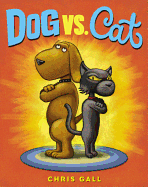
| Publisher: | Little, Brown | |
| Genre: | Friendship, Animals, Pets, Social Issues, Cats, Dogs, Juvenile Fiction | |
| ISBN: | 9780316238014 | |
| Pub Date: | May 2014 | |
| Price: | $17 |
| Children's & Young Adult |
by Chris Gall
In perhaps his funniest picture book yet, Chris Gall (Substitute Creacher) takes on the age-old conflict between cat and dog.
Readers will sense the potential for tension as Mr. Button on one side of town picks out a "friendly-looking dog" from the pet store ("Pick me!" says the sign held by a bull dog; "I'll be your best friend!" reads the winning pooch's message), while Mrs. Button on the other side of town selects a "smart-looking cat" (a Persian's sign says, "Warning--High Maintenance"; "Whatever" reads the winner's remark). The pets draw a line down the middle of their shared quarters, and low-key Dog's side devolves into disarray, while Cat keeps everything just so. Things quickly get out of hand (er, paw), and each becomes determined to "get the other in trouble." But after they build a wall to divide their room, they remember all the good times they had together (one of their most comical memories depicts Dog trick-or-treating wearing a cat mask and Cat with a dog mask), and a common enemy (a new baby) seals their bond.
Gall gets each animal's characteristics to a tee, especially in his visual details. This will appeal to older siblings expecting a new baby and to both dog and cat people--in other words, to everyone. --Jennifer M. Brown, children's editor, Shelf Awareness
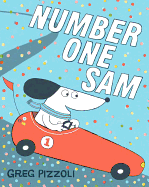
| Publisher: | Disney/Hyperion | |
| Genre: | Values, Animals, Sports & Recreation, Social Issues, Dogs, Juvenile Fiction, Manners & Etiquette, Miscellaneous | |
| ISBN: | 9781423171119 | |
| Pub Date: | May 2014 | |
| Price: | $16.99 |
| Children's & Young Adult |
by Greg Pizzoli, illust. by Greg Pizzoli
Sam the dog learns there's more than one way to win in this second charming picture book from the winner of the 2014 Geisel Award (for most distinguished beginning reader).
In a predominantly blue, red and yellow palette, black-and-white pooch Sam proves again and again he's number one: "He was number one in speed. He was number one at turns." Greg Pizzoli conveys his hero's velocity via buildings that lean back, and his skillful turns with the U-shape of Sam's red sports car (#1, naturally). The pooch was also "number one at finishing races in the number-one spot," beneath a spray of multi-colored confetti. Fans of The Watermelon Seed will recognize the crocodile competitor; the others include a yellow hen and Sam's best friend, an elephant named Maggie. But when Sam loses to Maggie, his cheeks flush with embarrassment, and he can't bring himself to cheer for her. At their next race, he doesn't even wish Maggie luck (his sports car now reads "#2"). But when Sam takes the lead, he sees five yellow chicks crossing the track! Sam knows there's only one way to save them: he sacrifices the race. But as last-place Sam escorts the chicks to safety, he realizes the crowd is cheering for him.
Children will savor discovering details that go unstated in the text, such as the chicks flocking to a fellow driver in Sam's race. The crocodile may get the trophy for this race, but the hen gets her chicks back, and Sam's happy reunion with Maggie will lift everyone's spirits. --Jennifer M. Brown, children's editor, Shelf Awareness